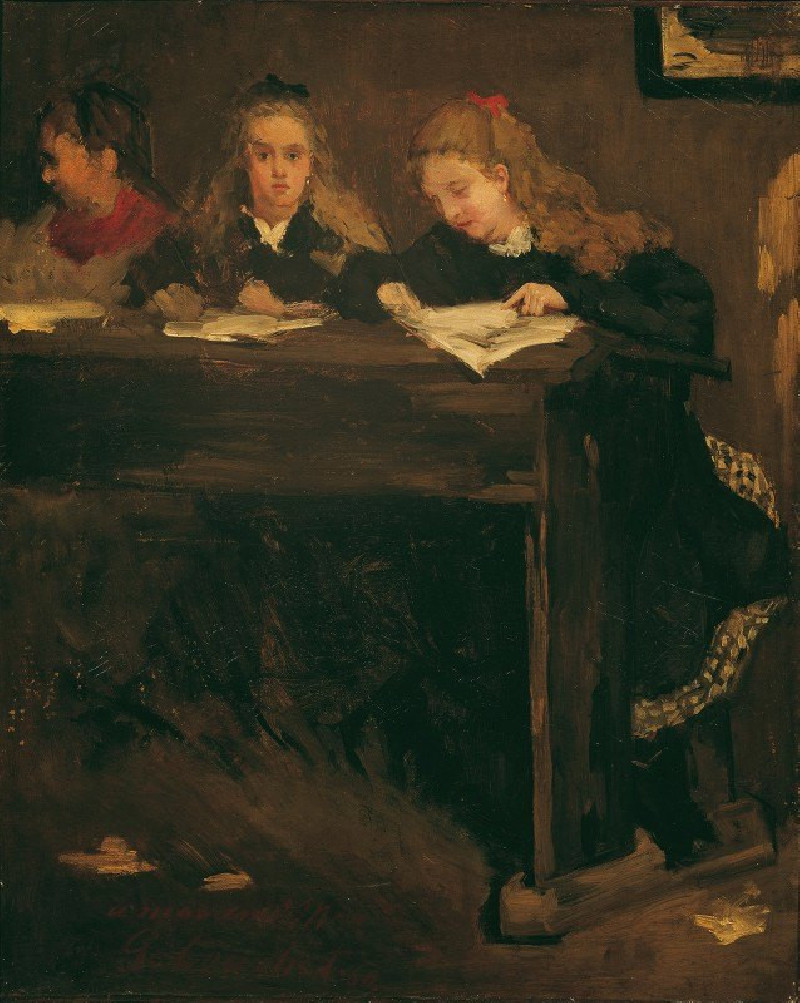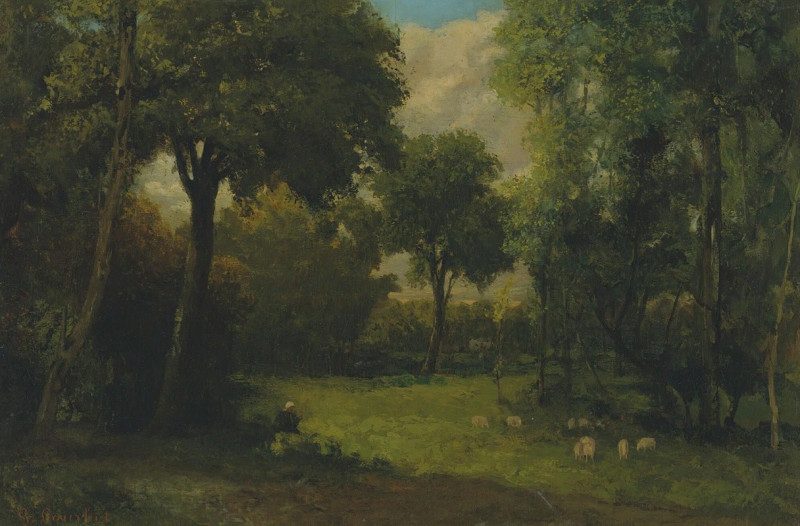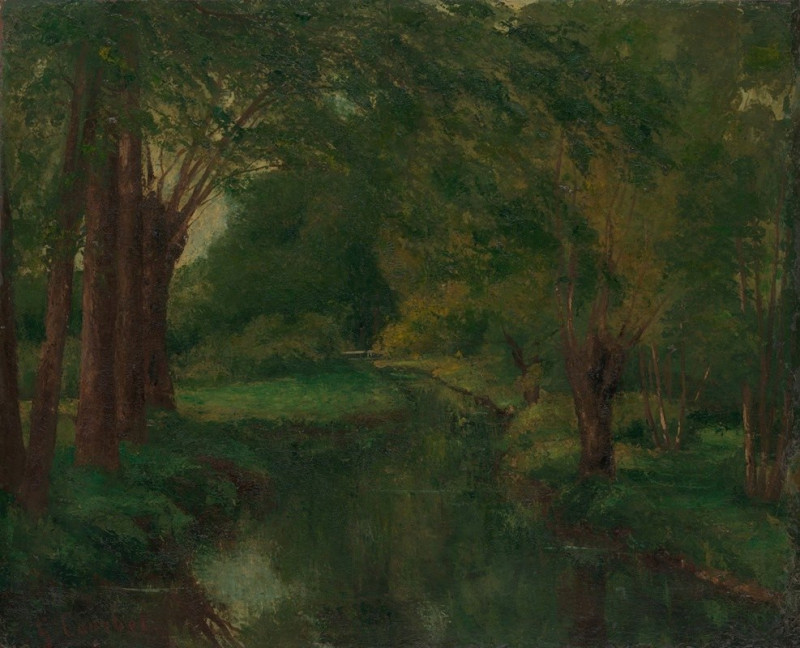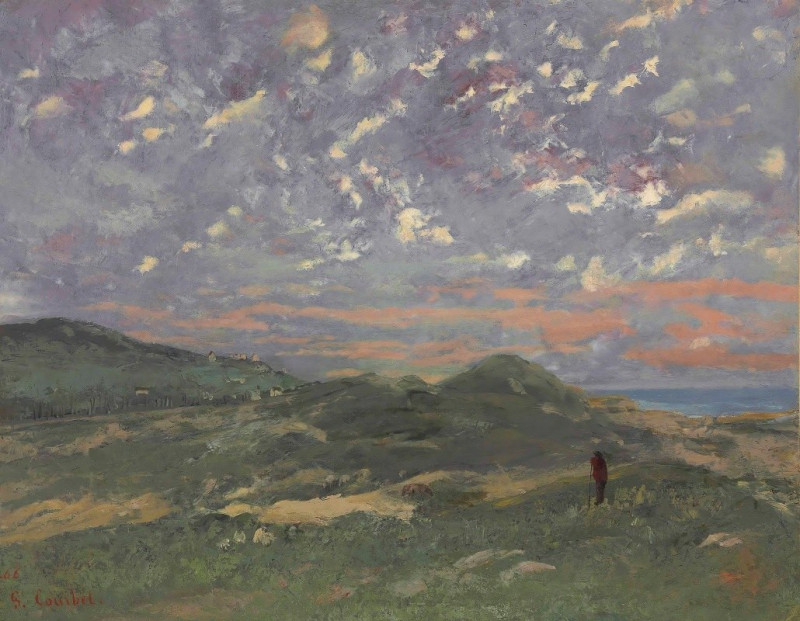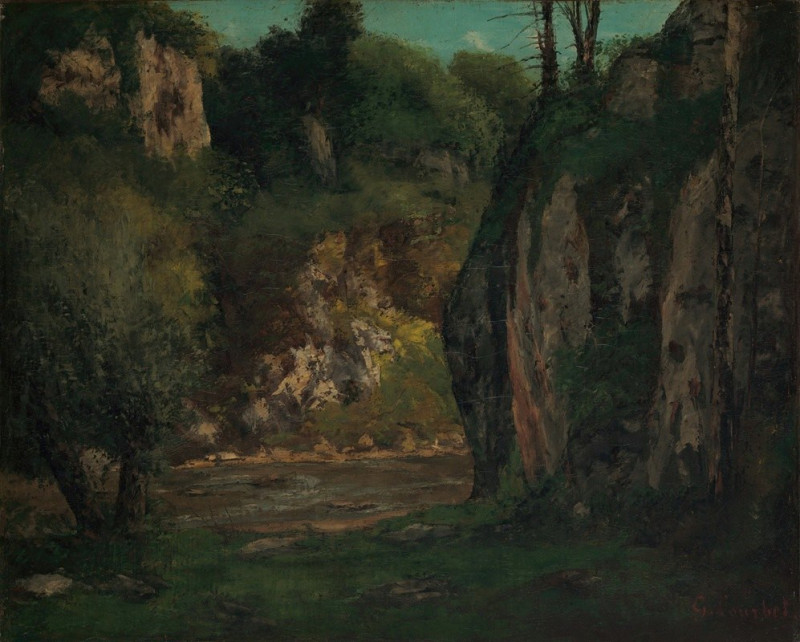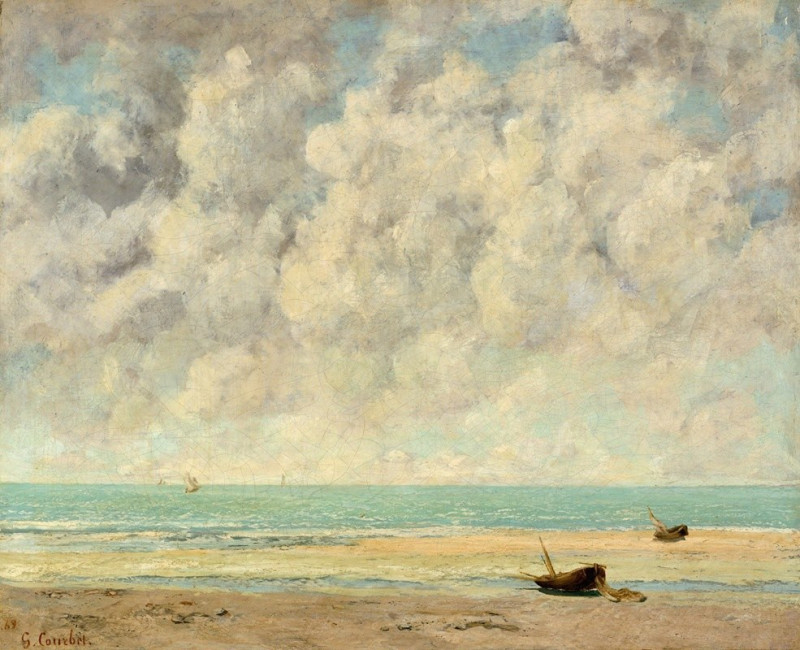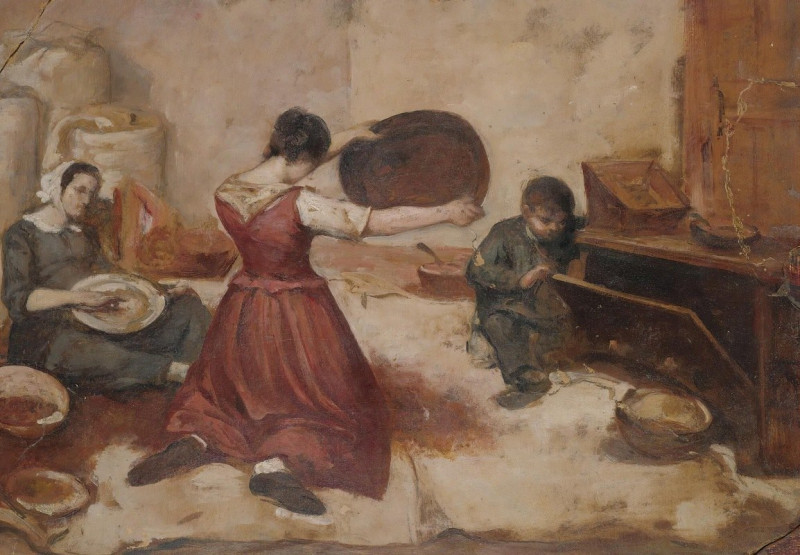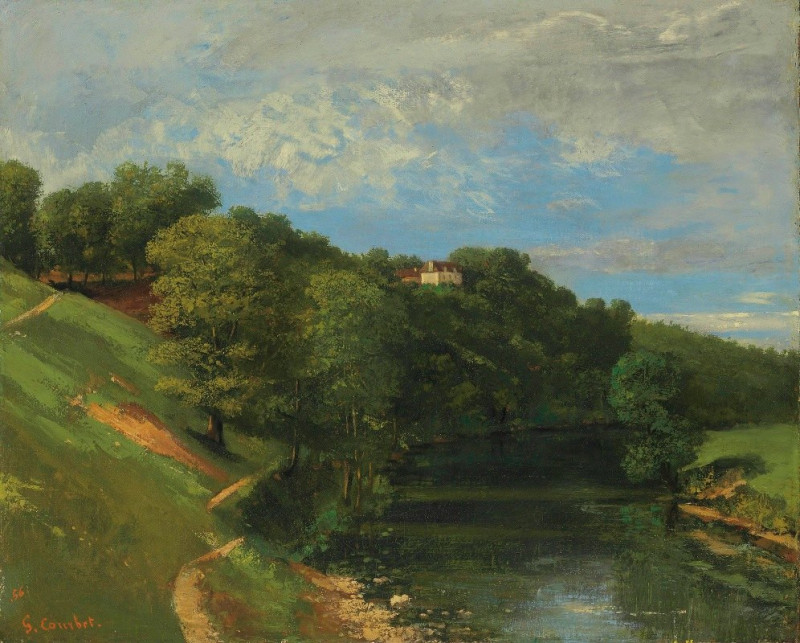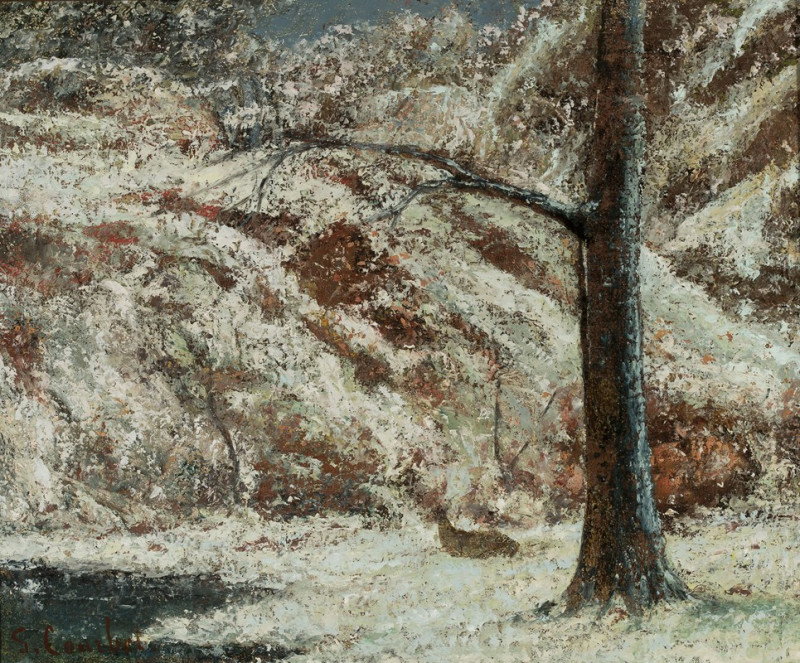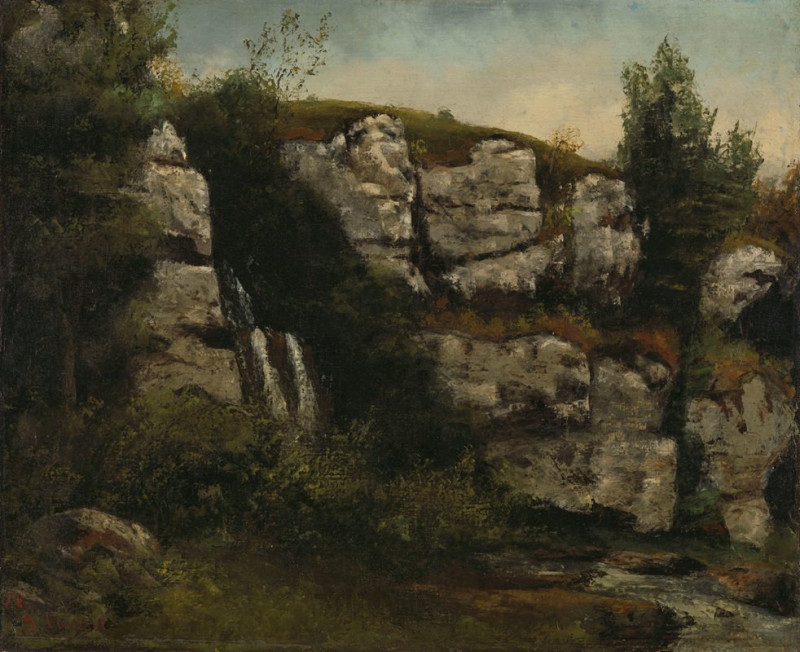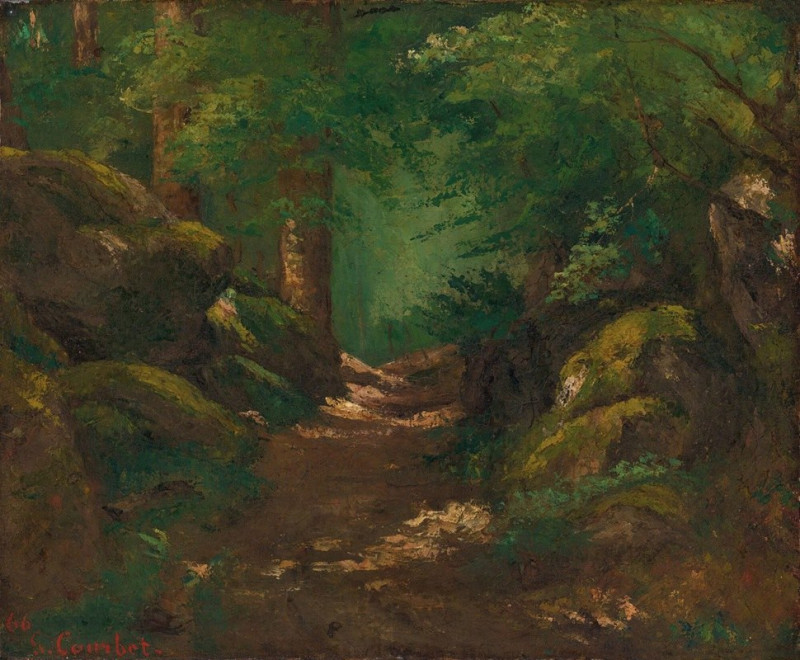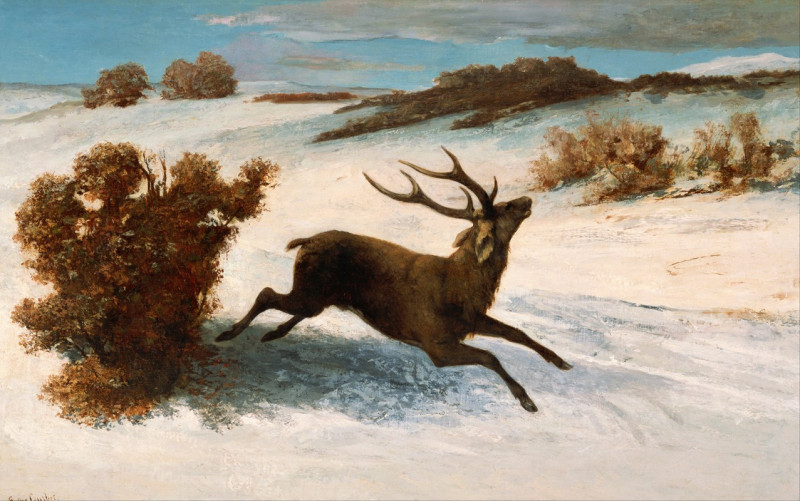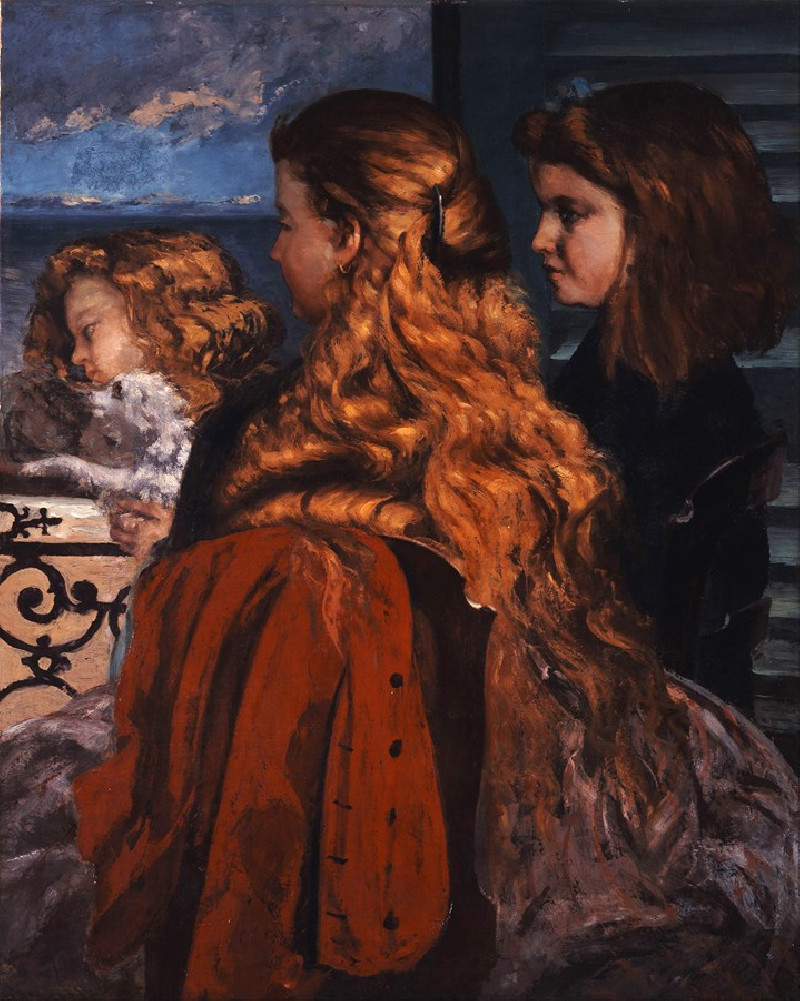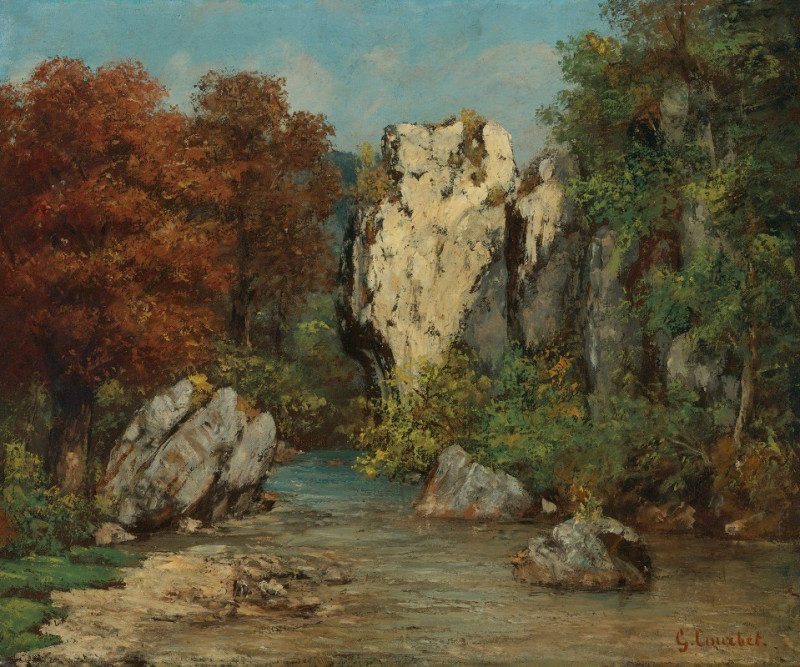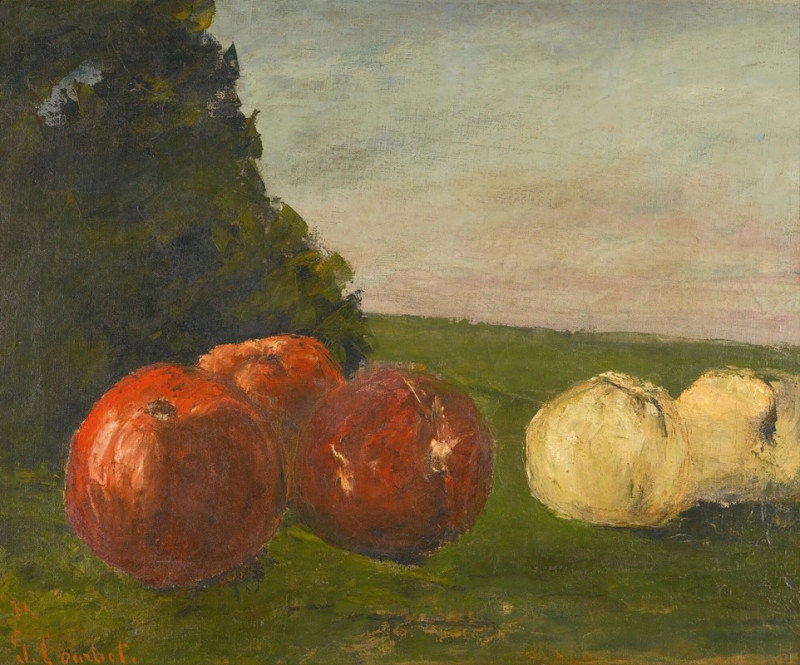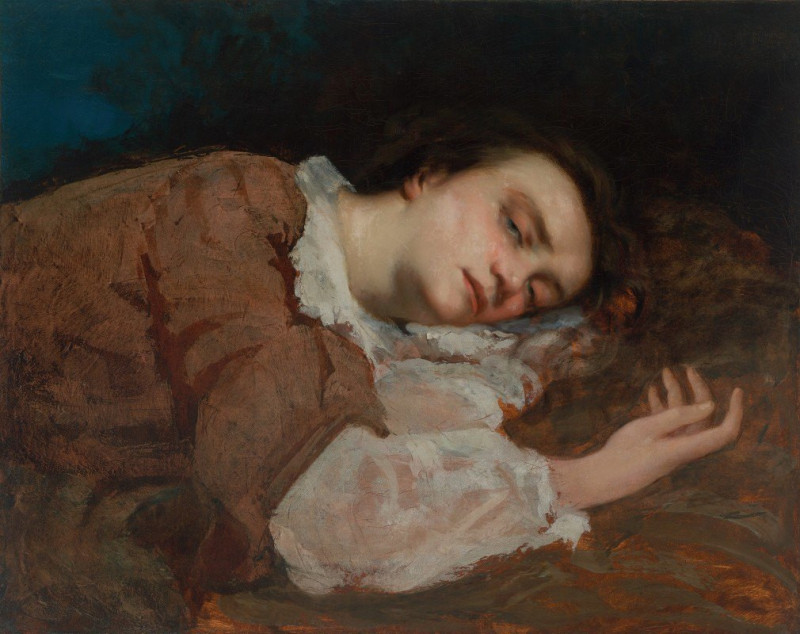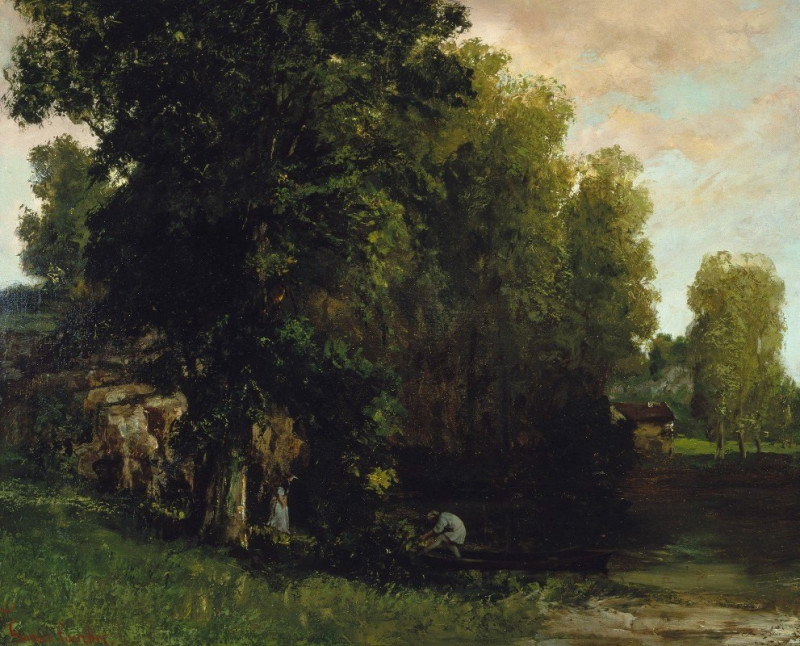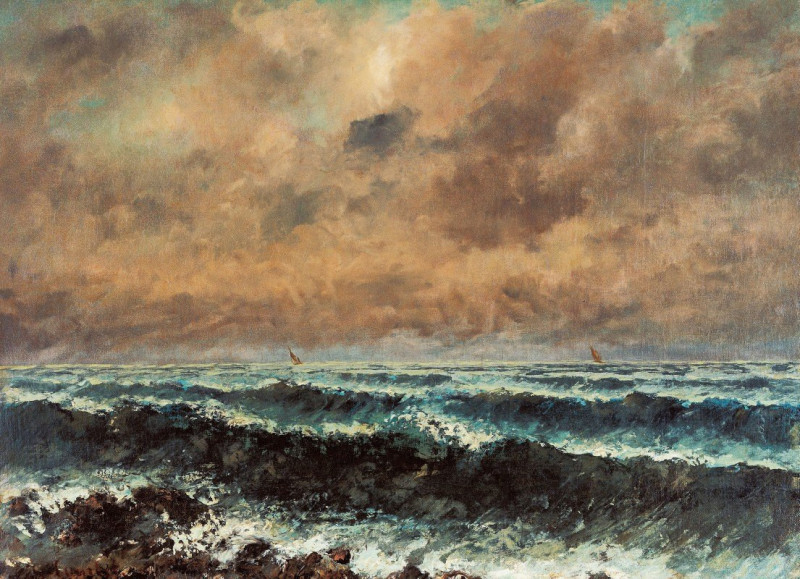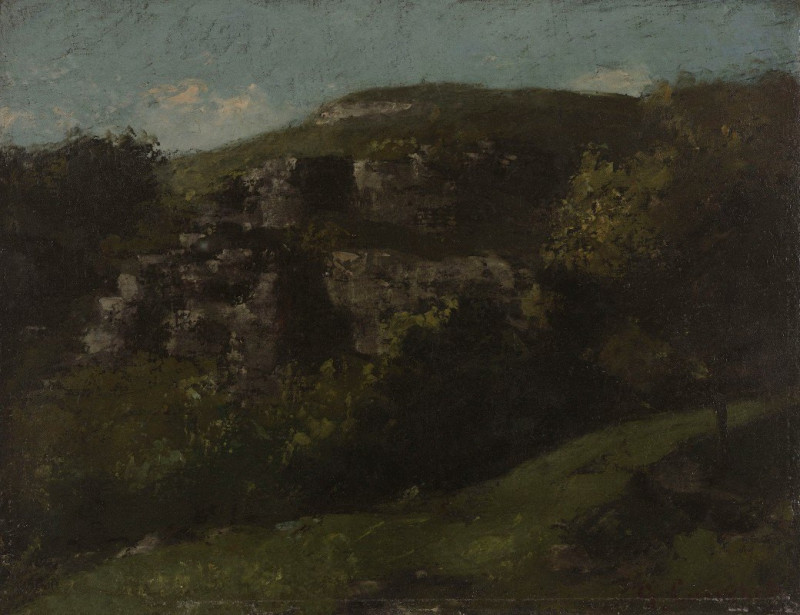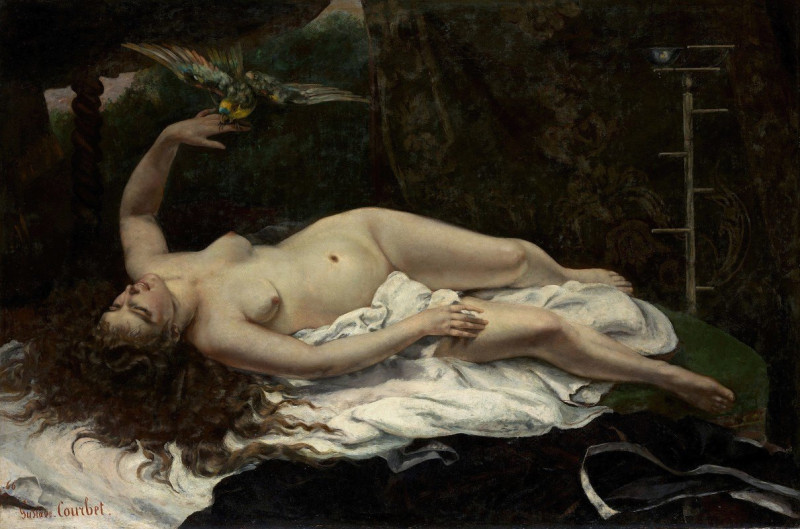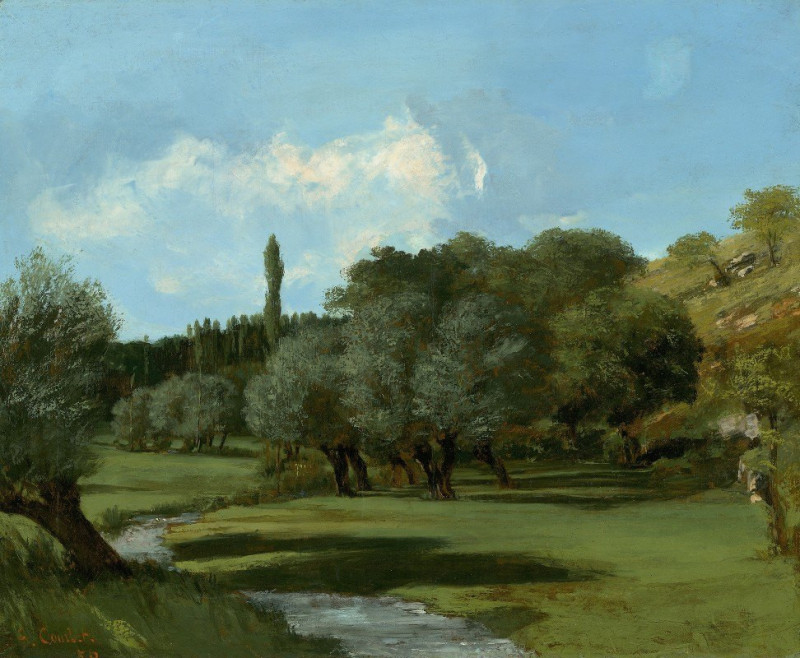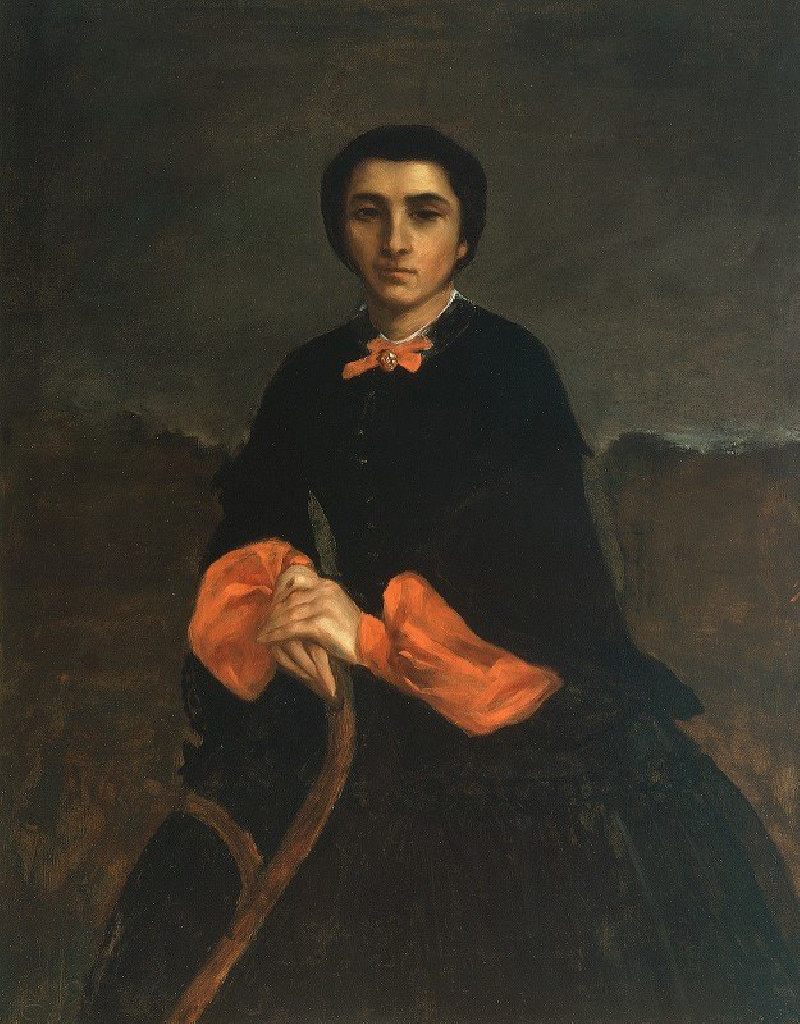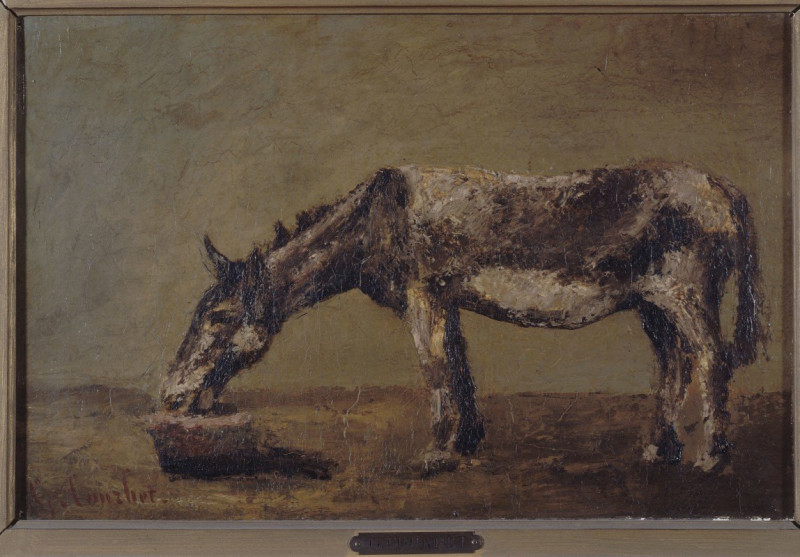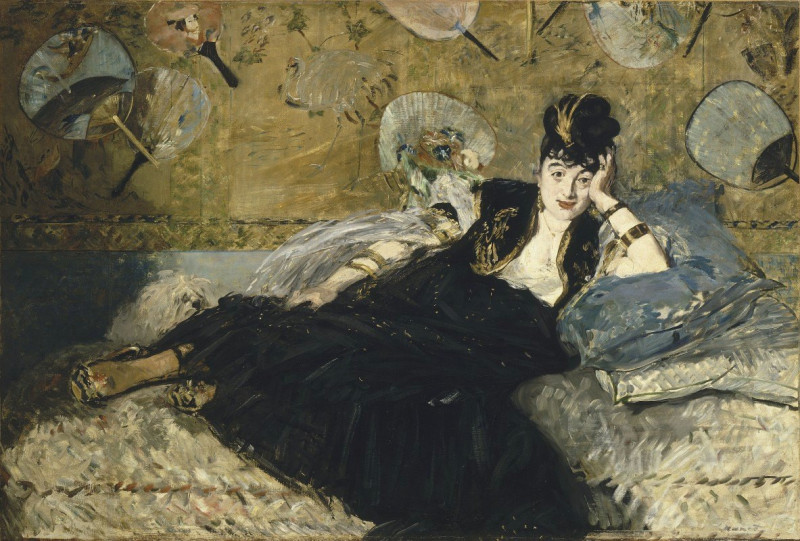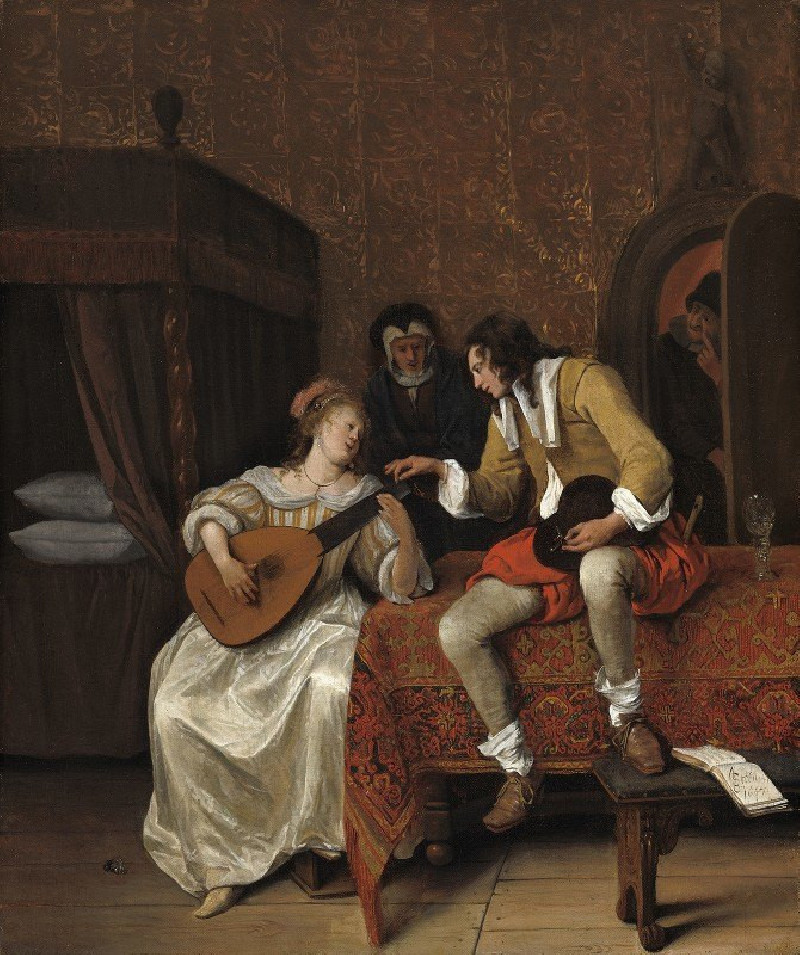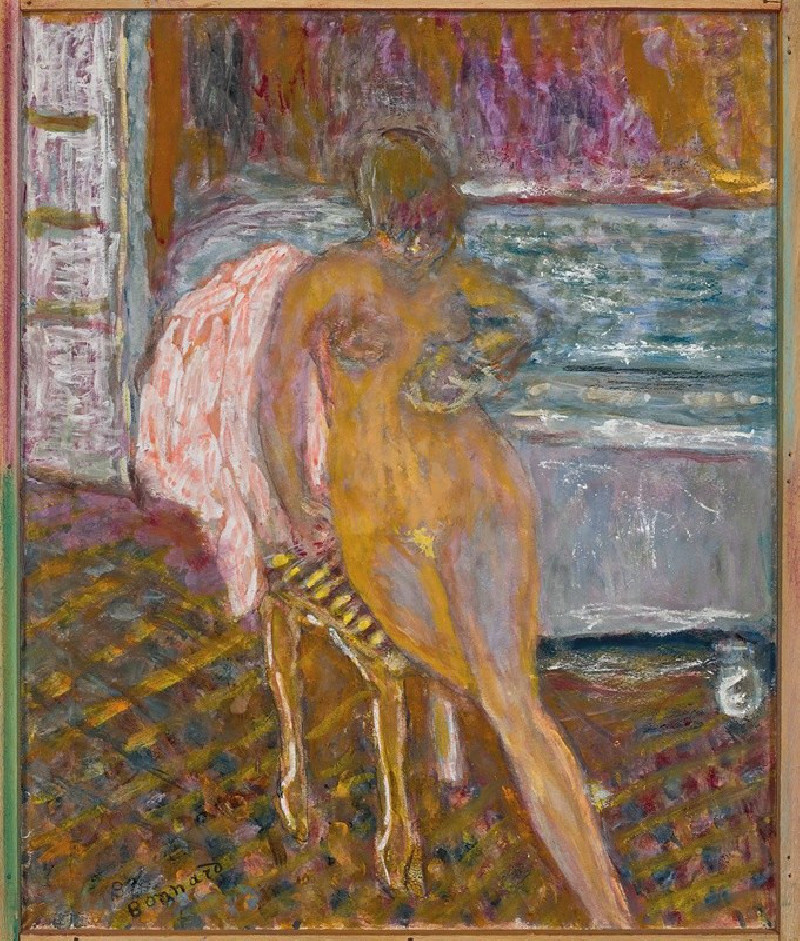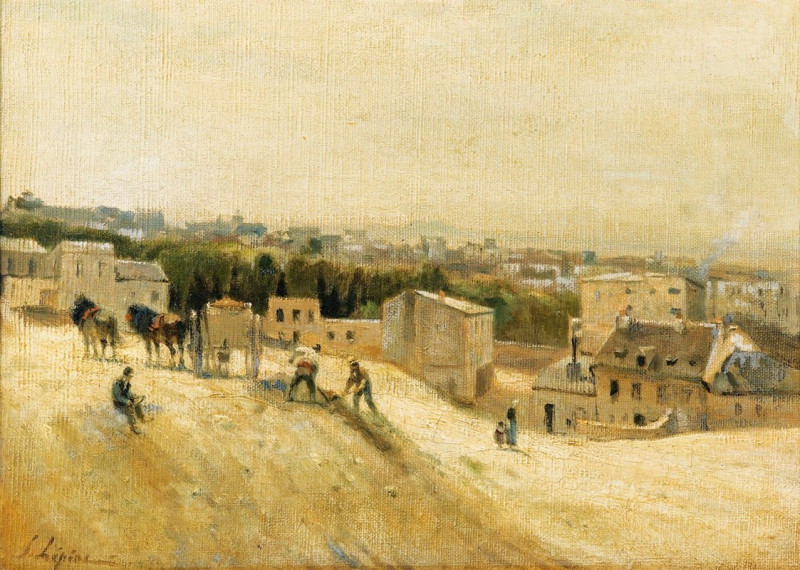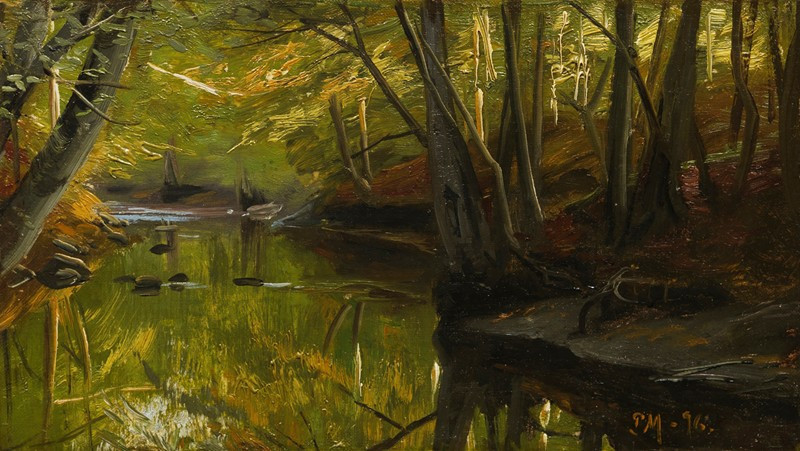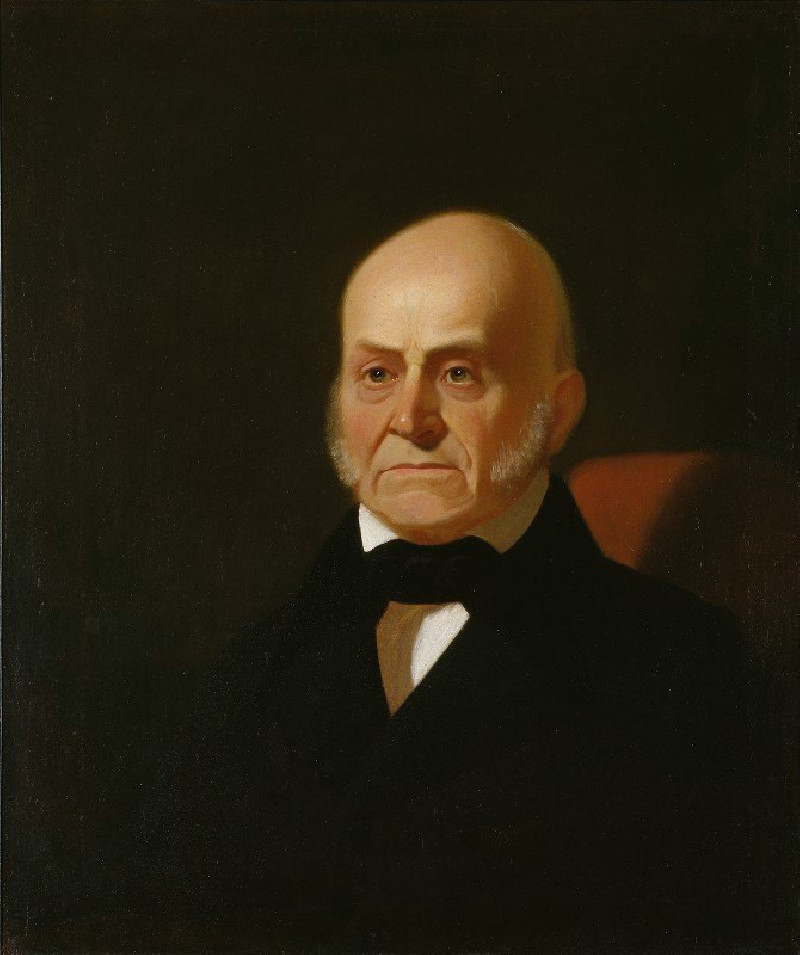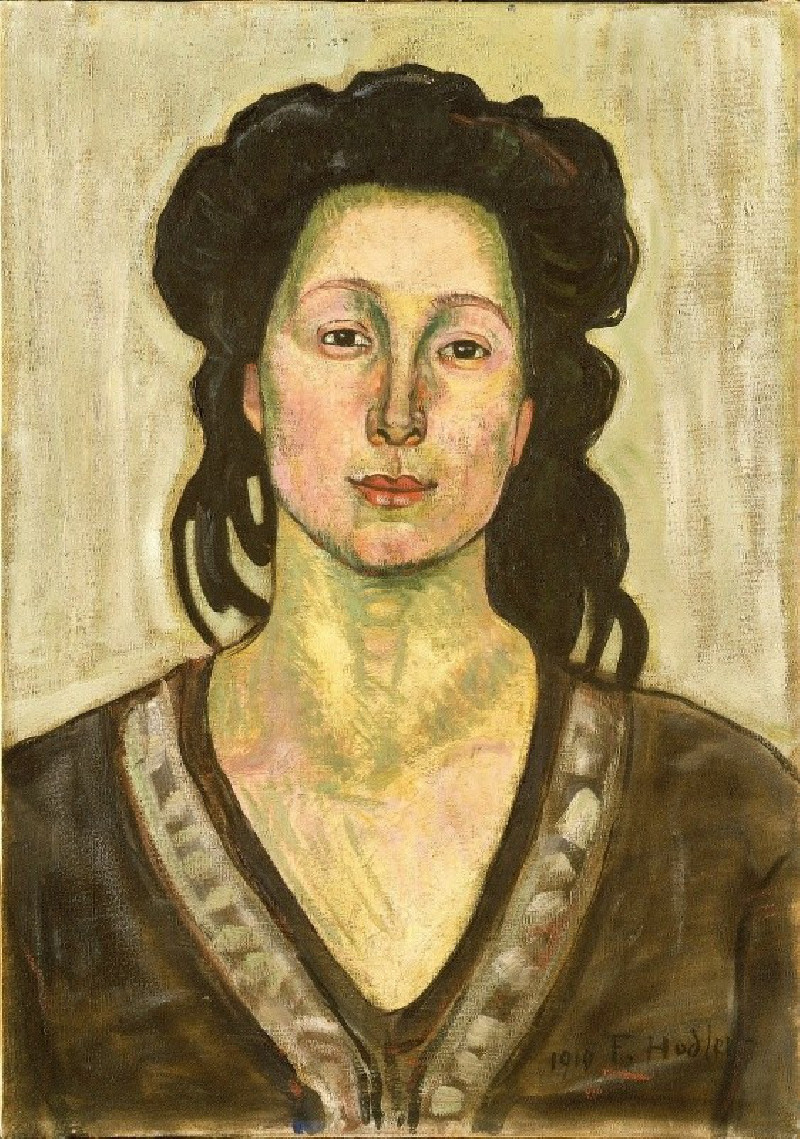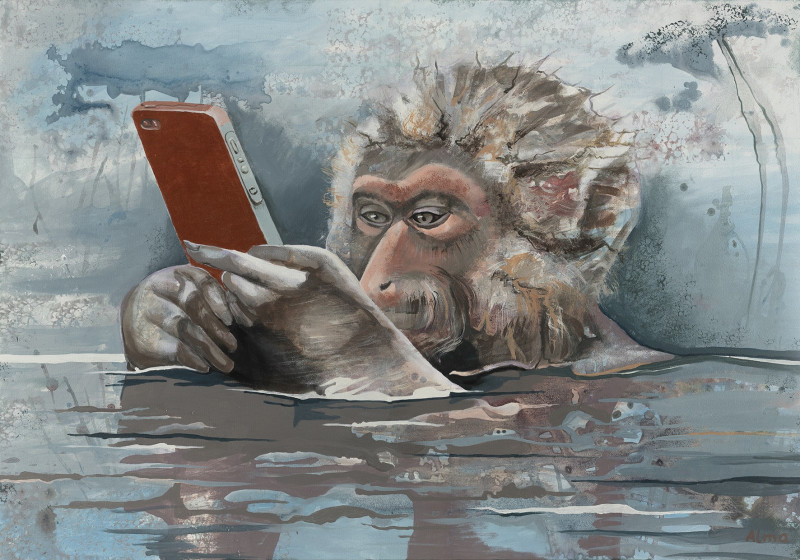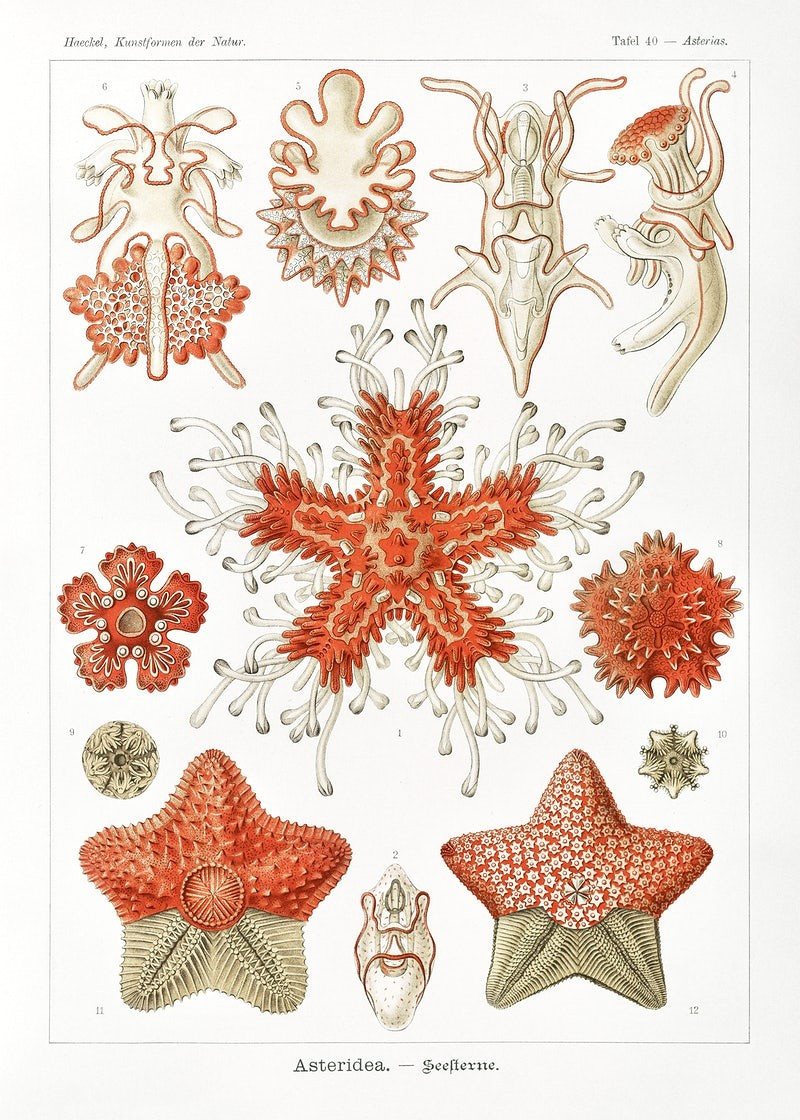The Source of the Loue (1864)
Technique: Giclée quality print
Recommended by our customers
More about this artwork
Gustave Courbet's 1864 painting, "The Source of the Loue," masterfully captures the rugged beauty and mystical allure of nature in his signature Realist style. The artwork illustrates the dramatic emergence of the Loue River from a dark, cavernous opening beneath overhanging cliffs. The vigorous and lively brushwork enhances the luminous froth of the water cascading over rocks, creating a dynamic interplay of light and shadow.Courbet's detailed texturing and rich, muted earth tones give palpable weight to the stony surfaces and lush foliage, making the scene almost tactile. The rustic wooden structure on the left appears battered by elements, adding a touch of human presence and history to the otherwise raw and untouched landscape.This painting not only showcases Courbet's adeptness at landscape painting but also reflects his profound connection to the landscapes of his native Franche-Comté in eastern France.
Delivery
Returns
Jean Désiré Gustave Courbet (10 June 1819 – 31 December 1877) was a French painter who led the Realism movement in 19th-century French painting. Committed to painting only what he could see, he rejected academic convention and the Romanticism of the previous generation of visual artists. His independence set an example that was important to later artists, such as the Impressionists and the Cubists. Courbet occupies an important place in 19th-century French painting as an innovator and as an artist willing to make bold social statements through his work.




